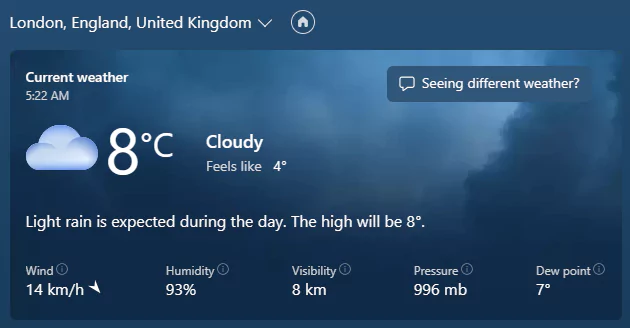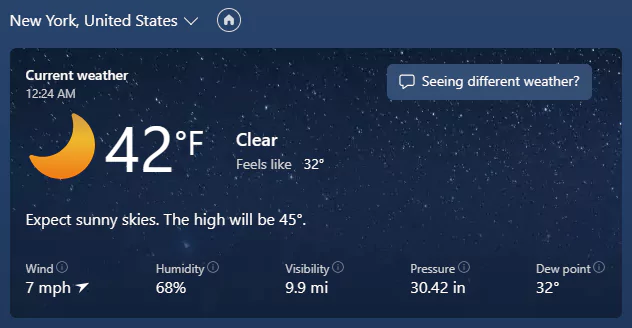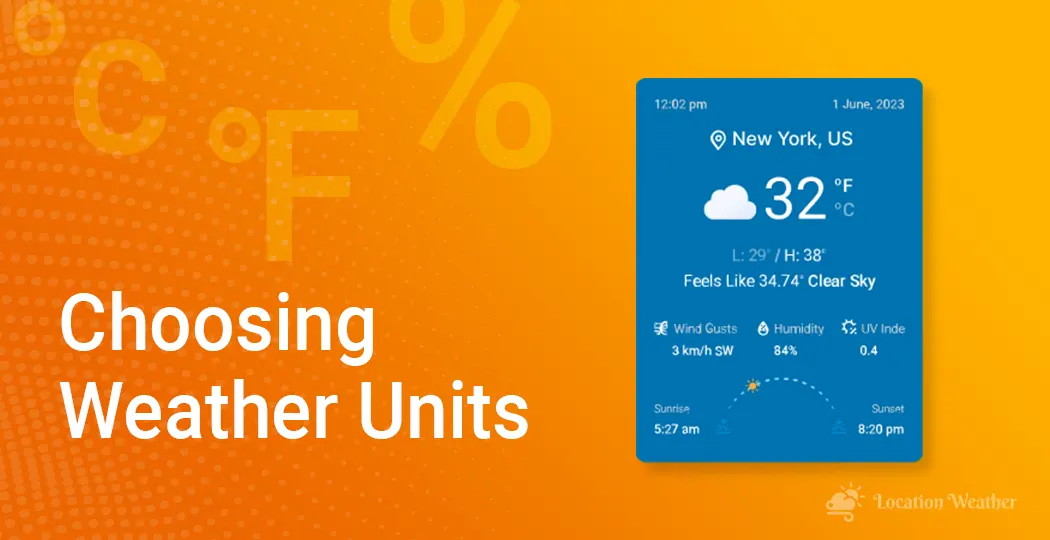Do you want to use the best weather measurement units based on your location and purpose?
People of different countries use various measurement units. It’s not different in terms of weather. For example, most countries use Celsius for temperature, but some still use Fahrenheit. Besides them, science uses some different units. So, what are the perfect measurement units you should choose?
In this blog, I’ll share the various weather measurement units in detail and tell you what units you should use.
So, let’s get in.
Types of weather measurement system
There are primarily two types of measurement systems.
- Metric
- Imperial
The Metric system, now widely known as the International System of Units (SI), is the most used measurement system worldwide.
The Imperial system is a historical measurement system used in a few countries and territories like the USA, Liberia, Palau, Bahamas, etc.
Besides that, there are some measurement systems that are used primarily in scientific and thermodynamic contexts.
The weather measurement units
There are several weather measurement units based on the location and purpose of the measurement. Here’s a breakdown of the most common units used for:
Temperature

Temperature physical quantity expressing how hot or cold the air is.
- Celsius (°C): It’s the weather unit of the Metric system Widely used in most countries, including most of Europe, Asia, South America, and Africa.
- Fahrenheit (°F): Primarily used in a few countries such as the United States, the Bahamas, Palau, etc.
- Kelvin (K): Used primarily in scientific and thermodynamic contexts. It is not commonly used in weather reports for general audiences. 0 K is equal to -273.15°C.
Precipitation:
Precipitation shows the quantity of liquid or solid, that falls from the atmosphere and reaches the Earth’s surface.
- Millimeters (mm): The most used unit for precipitation, providing high precision.
- Inches (in): Still used in some countries, particularly the United States. Less precise than millimeters.
Wind Speed:
- Kilometers per hour (km/h): Used in most of the countries.
- Miles per hour (mph): Primarily used in the United States and the Bahamas.
- Meters per second (m/s): Standard unit in meteorology, easily converted to other units.
Air Pressure:

- Millibars (mb): Mostly used unit for atmospheric pressure. Easy to convert to
- Hectopascals (hPa): Often used in aviation and some European countries. Gradually becoming more common in weather forecasts. Equivalent to 100 millibars.
- Inches of mercury (inHg): Traditionally used in the United States and some other countries. Similar in precision to inches of mercury.
- Millimeters of mercury (mmHg): Primarily used in some European countries and South America. Less common than millibars or hectopascals.
- KiloPascals (kPa): Sometimes used in scientific contexts.
- Pounds per square inch (psi): used in the UK and some commonwealth countries.
- Kilogram per Square centimeter (kg/cm2). Used worldwide. More concise.
- Atmospheres (atm): Rarely used but represent the average pressure at sea level.
It’s important to note that the preferred unit for weather pressure can vary based on the specific context and audience. In scientific and international communication, millibars or hectopascals are typically used. However, local weather reports may use units more familiar to the audience, such as inches of mercury in the United States.
Visibility
- Kilometers: Mostly used units worldwide to show visibility.
- Miles: Used in the USA and some other countries.
What weather measurement units you should use
Choosing perfect weather measurement units is crucial. However, it’s not a tough task if you consider the following factors:
- Your location: Use units commonly used in your region for easier understanding.
- Purpose of measurement: If for scientific research, use standard units like Celsius and millimeters. For everyday use, local units might be more convenient.
- Audience: If communicating with a specific audience, use units they are familiar with.
Pro tip: If your audience is multinational, use both metric and imperial weather units. Suppose, you are going to add a weather forecast to the website of an international hotel that receives many guests from different countries across the globe. You should use both units as seen below.
Ultimately, the best weather unit is the one that allows you to accurately and effectively communicate the weather information you want to convey.
Take away
Choosing perfect weather measurement for your audience is very important. I hope this blog helped you to learn about the weather measurement units and what units you should use.
However, if you want to display an accurate and detailed weather forecast on your WordPress websites using these units perfectly, the Location Weather plugin helps you best. It enables you to create weather widgets and blocks for any location worldwide and place them anywhere on your WordPress site in minutes without coding.
Let’s discuss weather measurement units more in the comment box.

Leave a Reply